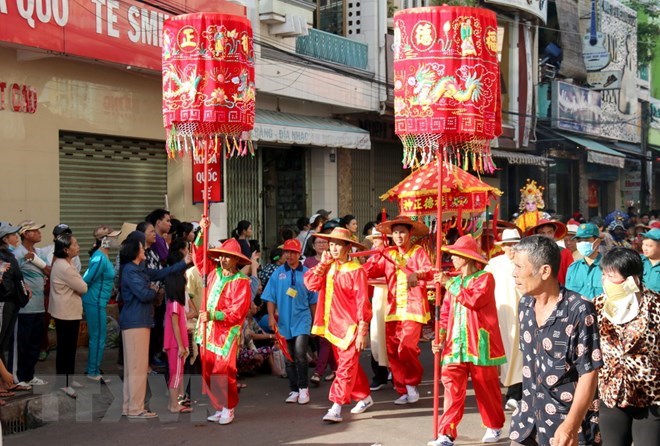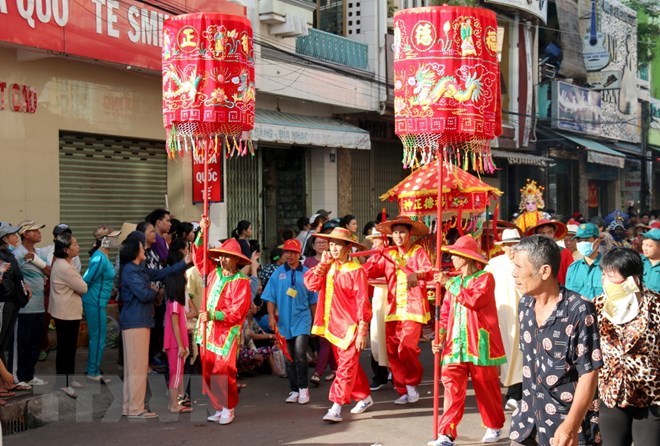
Thousands of locals and tourism flocked to Phan Thiet city, in the south central province of Binh Thuan on September 1 to join the ‘Nghinh Ong xuat du’ ritual, a key part of the biennial Nghinh Ong (Whale Worship) festival.

At the ‘Nghinh Ong xuat du’ ritual (Photo: VNA)
Some 1,000 people masqueraded as the nation’s legends, and
processed Ong’s tablet through the streets of Nguyen Hue, Dinh Tien Hoang,
Trung Trac and Trung Nhi. Stellar dances and martial art performances were
featured during the process.
The highlight of the ritual was the performance of a 49-metre long dragon, the
longest one in Vietnam.
Various traditional rituals were revived at the event, aiming to preserve and
develop the folk culture of the Hoa ethnic community in Phan Thiet city as well
as pray for peace, favourable weather conditions, bumper crop, happiness and
prosperity.
The festival, together with four others, was chosen to serve tourism
development in the province, making contributions to popularising local images
among domestic and international friends.
This year’s event took place from August 30 to September 1.
Phan Thiet city worked to ensure social order, traffic safety, and hygiene
during the festival.
Nghing Ong or Cau Ngu festival is a cultural identity of south central coastal
localities, which has been preserved and passed down through generations. The
festival is to pray for bumper hauls of fish, safe voyages and peace for the
nation.-
Source: VNA
The People’s Committee of Lac Son district held a ceremony on April 28 to receive the provincial relic certificate for the ancient rock carving site at Suoi Co stream, located in My Thanh commune.
A special music show titled "The country is in the fullness of joy” has been held at Hoa Binh Square in Hoa Binh city in celebration of the 50th anniversary of the liberation of the South and national reunification (April 30, 1975–2025).
The People's Committee of Lo Son commune, Tan Lac district, has organised the local annual traditional stream fishing festival on April 19 - 20.
As a land deeply intertwined with human history and Vietnam’s millennia-long journey of nation-building and defence, Hoa Binh is often revered for its epic tales and legends.
Residents of Hoa Binh boast a rich cultural identity, reflected in their unique language, traditional attire, customs, and folk melodies – described as "sweet as honey, clear as a mountain stream.”
Lac Son district’s Vu ban town held the 2025 Truong Kha temple festival on April 12–13 (the 15th–16th days of the third lunar month). Since its revival in 2019, the festival has been organised every three years, preserving valuable intangible heritage while meeting the community’s cultural and spiritual needs.



